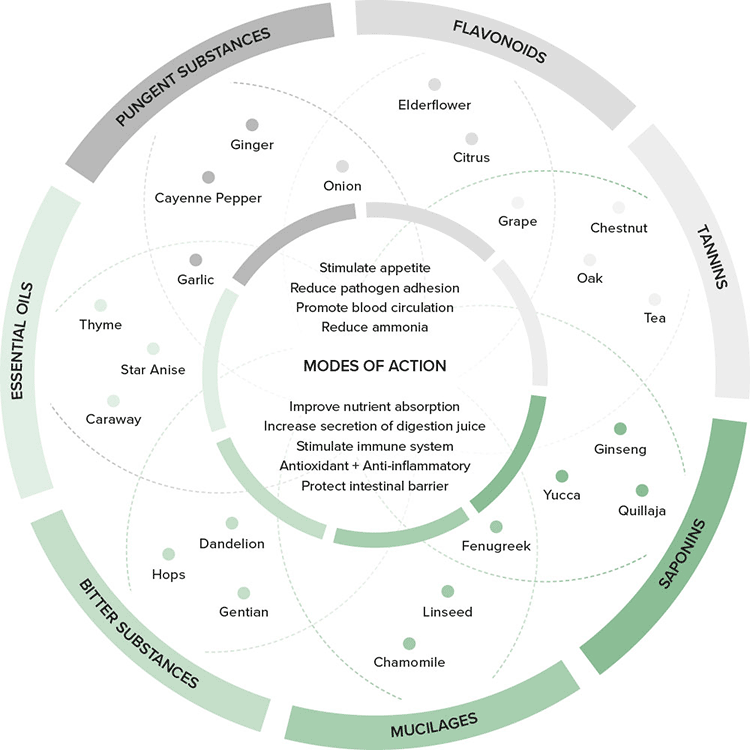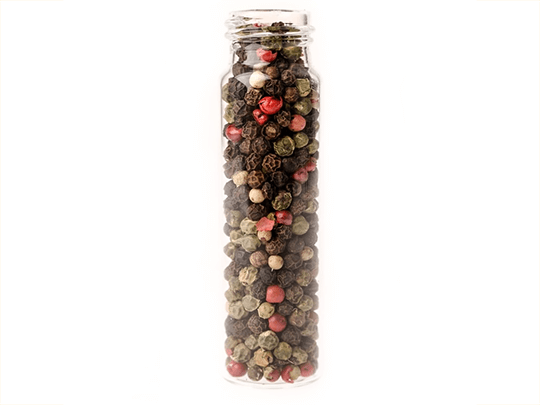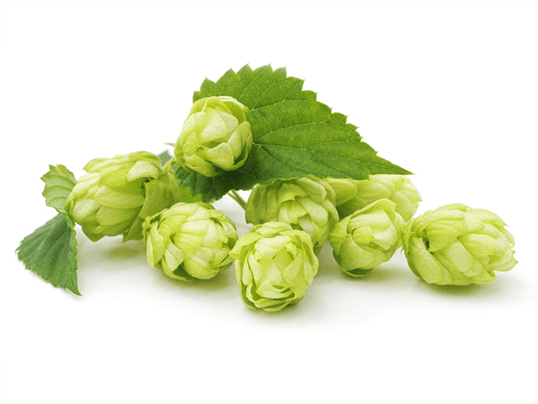Phytogenics in animal feed in the spotlight: The seven substance groups (part 1)
When observing the world around us – beyond the feed industry – we can see the market’s proliferation of plant extracts and natural substances. They are ranging from cleaning products, hair and skin care to food and beverages. Companies across the world use plant-based ingredients to meet customers’ needs in seeking clean labels and natural alternatives.The time has come to bring phytogenics to the spotlight of the feed industry as well. In this blog series, we will explain three decades of their use to support animal performance and health as well as their positive impact on the environment.Welcome to the phytogenic universe!
Welcome to the phytogenic universe
You might not hear about them, but phytogenics (plant-based feed additives) are far from a new concept. The powerful properties of plants have been recorded throughout history. Yet, we often find ourselves at the beginning of the conversation.
Therefore, we invite you to a powerful journey to explore the diversity of nature with us. Giving you a roadmap through this still-not-fully-explored land – we introduce you to seven phytogenic substance groups. Every group collects ingredients that fulfill the same purpose., e.g. reducing ammonia emissions.
Then, we are taking numerous stops in every group and bringing the various substance groups of phytogenics in animal nutrition into the spotlight.


Pungent substances
Examples can be found in your spice cabinet: black peppercorns, garlic, ginger and turmeric.
How it works: Pungent substances activate reactions in cells of the mucous membranes and increase blood circulation, improve animal metabolism and help support detoxification of the animal’s body. Research also indicates pungent substances increase the secretion of digestive juices and form synergistic effects with essential oils.
Modern history: Traditionally consumed in Indian culture as “golden milk” for medicinal purposes, turmeric is capturing mainstream attention as shown by Starbuck’s menu addition of “Latte with Turmeric,” which was launched in limited locations in the United Kingdom.
Delacon fact:
We study and use synergies to make ingredients work even better together. For example, a small amount of black pepper increases absorption of curcumin.

Saponins
Saponins can be found in dietary sources including beans, legumes, potatoes, tomatoes, oats, quinoa, red wine and spices like ginger. Two of the most common commercial sources for saponins include Yucca schidigera and Quillaja saponaria. These plant species are common in hot, arid climates. For example, yucca grows in the Mojave, Sonoran and Great Basin deserts and the Quillaja tree or so-called soap bark tree is found in the Andes region of South America predominately Chili, Peru and Bolivia.
Modern history: Today, saponins are found in beverages, cosmetics, industrial surfactants and foams and vaccine adjuvants. Saponins are used in root beer and dark, thick beers to produce a foamy head on the poured drink. The residue remaining on the glass after the foam dissipates is saponin.
Delacon fact:
Quillaja saponins are a valued ingredient in some of our core products – among more than 100 other phytogenic ingredients. To ensure the regular supply of Quillaja saponins that meet our strict ingredient quality and standardization requirements, Delacon partnered with Fitotek in 2014 and co-owns the Quillaja production site in Chile. Collaborations like this with Paolo Tamargo (CEO Fitotek & co-owner) are essential to provide consistent, standardized finished products to our customers with sustainable and environmentally responsible practices.

Bitter substances
Common examples include hops, gentian root and dandelion.
How it works: Studies show bitter substances work via stimulation of taste buds in the tongue and directly on gastric and pancreatic cells where they increase gastric juices and bile secretion. They can enhance intestinal activities of trypsin, lipase and amylase, enhance mucus production and shorten feed transit time.
Modern history: Bitters are traditionally imbibed after meals as herbal digestive support to ease digestion such as the famous Underberg bitters, a secret concoction of aromatic herbs from different countries. In recent years, the popularity of hoppy craft beers like IPAs, bitter greens like arugula, radicchio and Brussels sprouts, and dark chocolates have piqued American interest in bitter tastes.

Essential oils
Among the most common essential oils are extracts of thyme, star anise, cinnamon, clove and rosemary.
How it works: Essential oils offer many functions: antimicrobial, antioxidant, antiinflammatory, immunomodulatory, hypolipidemic, along with enhanced secretion of digestive enyzymes. The quorum sensing inhibition ability of essential oils is an exciting concept that has potential to reduce pathogenicity of harmful bacteria. The combined effects of these functions result in enhanced gut histology and function.
Modern history: Essential oils are everywhere on the market today. The U.S. essential oil industry was valued at $3.36 billion in 2015, according to Grand View Research. Essential oils can be found in lozenges, cosmetics, home aromatherapy, flavorings in food and beverages, medicinal products, dental care applications, cleaning products and household items such as toilet paper and tissues.
Delacon fact:
Highly volatile essential oils must be protected for the feed manufacturing process and feed storage. Delacon uses a patented micro-encapsulation process that ensures delivery to the animal’s gastrointestinal tract.

Marlene Forrai
Storyteller, foodie, life-long learner – may be the three words that describe me best. Unfortunately, you cannot make a living by only eating food, even though it’s healthy. Therefore, I have developed my skills in Marketing, Online Communications and Content Management to enlighten people around the globe about the power of nature and its contribution to animal as well as human health. Since February 2022, Marlene started a new career path outside of Delacon.










